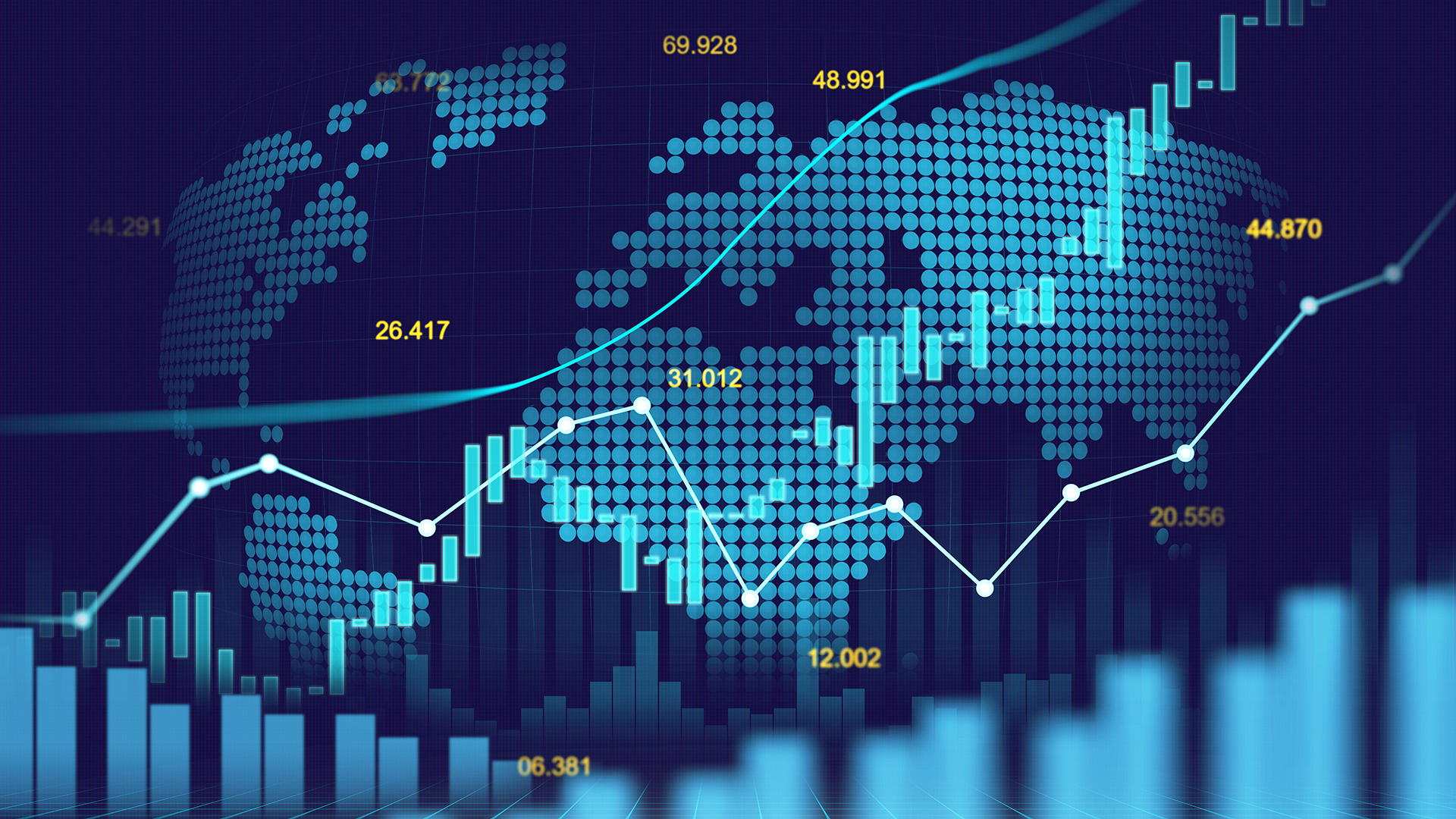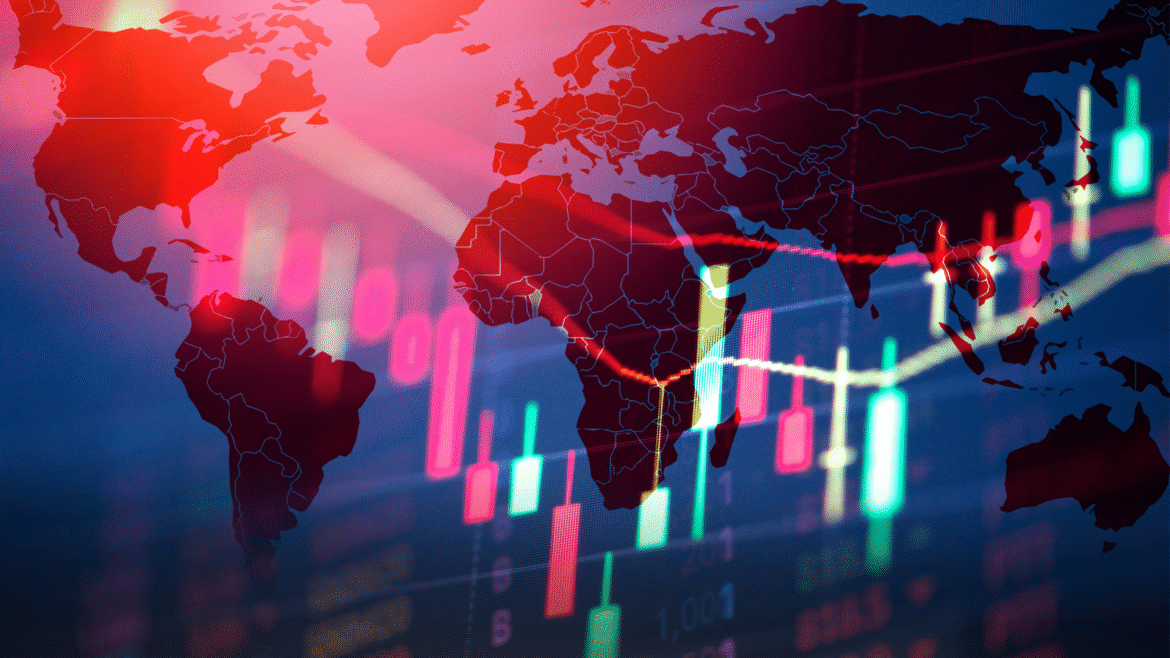War and geopolitical tensions have always had a profound effect on global financial markets. Whether it’s a regional skirmish or a full-scale international conflict, wars create waves of uncertainty that ripple through the stock markets, forex, commodities, and even cryptocurrencies. Investors often find themselves caught between fear and opportunity—fear of market instability and opportunity arising from volatility and shifting economic dynamics.
The phrase “War and Markets” goes beyond short-term stock dips or commodity spikes—it encapsulates changes in investor psychology, trade patterns, and long-term economic expectations. During major conflicts, such as World War II, the Gulf War, or recent geopolitical tensions involving Russia and Ukraine, global markets have seen dramatic movements that reflect both panic and profit potential.
In this article, we’ll explore how war influences global markets, how traders and investors can identify trading opportunities during conflicts, and what historical lessons can guide future decisions.
Link Between War and Financial Markets
When conflicts erupt, the financial markets often respond immediately. Investors tend to seek safer assets, while riskier markets experience sell-offs. Historically, wars have disrupted supply chains, increased inflation, and shifted government spending priorities—all of which directly affect market performance and investment strategies.
Market reaction typically depends on several key factors: the scale of the conflict, the nations involved, and the potential impact on global trade and energy supply. For example, when tensions rise in oil-producing regions, the commodities market, especially crude oil, often experiences rapid price increases due to fears of supply shortages.
At the same time, forex markets react to changes in investor confidence. Currencies like the U.S. dollar, Swiss franc, and Japanese yen are often viewed as “safe havens,” gaining strength during global uncertainty. On the other hand, currencies tied to emerging markets or conflict zones often depreciate.
Stock Markets During Times of War
Initial Shock and Panic
The immediate reaction of the stock to the outbreak is typically negative. Investors rush to liquidate holdings, fearing uncertainty and losses. Historical data shows that stock indices like the S&P 500 and FTSE 100 often drop in the days or weeks following the start of a conflict. This initial market panic is largely driven by emotion and short-term risk aversion.
However, these declines are not always long-lasting. Once markets adjust and investors begin to price in the actual economic impact of the conflict, recovery phases often follow. For example, during World War II, the U.S. stock market initially plunged but later recovered as wartime production boosted economic activity.
Sector Rotation and Opportunity
Wars tend to benefit certain sectors while harming others. Defence stocks, energy companies, and commodities producers often experience gains as government spending and demand for military and essential supplies rise. Meanwhile, consumer goods, tourism, and technology may suffer due to reduced consumer spending and disrupted supply chains.
Savvy investors often look for sectoral shifts—a process known as sector rotation—to identify profitable opportunities. For example, companies involved in weapons manufacturing, cybersecurity, logistics, and oil production often perform well during prolonged conflicts.
Commodities Market: The War-Time Powerhouse

The commodities market is perhaps the most directly impacted during wartime. Wars disrupt trade routes, destroy infrastructure, and lead to sanctions—all of which reduce the availability of key resources.
Oil and Energy
Oil prices are often the first to respond to geopolitical tensions. A single missile strike in an oil-rich region can send crude prices soaring. The Russia-Ukraine war, for instance, caused Brent crude to spike above $120 per barrel in early 2022. Energy traders often exploit these fluctuations, but volatility makes the market risky.
Precious Metals: The Safe-Haven Surge
Gold, silver, and other precious metals traditionally act as safe havens during uncertainty. Investors flock to these assets to protect wealth from currency devaluation or inflation. During the 2008 financial crisis and subsequent geopolitical tensions, gold prices surged, reaffirming its role as a crisis hedge.
Agricultural and Industrial Commodities
Wars also impact agriculture and industrial commodities. Countries involved in conflict may halt exports of grains, metals, or fertilisers, creating global shortages. This offers trading opportunities for investors in futures markets who can anticipate supply disruptions and price increases.
Forex Markets and Currency Fluctuations During Conflicts
The foreign exchange (forex) market is extremely sensitive to war-related news. Currencies are reflections of national stability, and wars can significantly alter their value.
Safe-Haven Currencies
During global conflicts, traders often move their capital into safe-haven currencies like the U.S. dollar (USD), Swiss franc (CHF), and Japanese yen (JPY). These currencies tend to appreciate as investors seek stability and liquidity.
High-Risk Currencies
Currencies of nations involved in or near the conflict often depreciate due to fears of economic collapse, inflation, or sanctions. For instance, during the Russia-Ukraine conflict, the Russian ruble initially plummeted before stabilising through aggressive central bank interventions.
Forex Trading Opportunities
Skilled traders can profit from currency volatility by anticipating central bank policies, economic sanctions, and commodity price effects. For example, forex pairs like USD/JPY or EUR/USD often become highly active during war periods, offering both risks and rewards for short-term and swing traders.
Bonds, Interest Rates, and Government Debt
War financing often leads to increased government borrowing and rising public debt. Nations issue war bonds to fund military expenditures, and central banks may adjust interest rates to control inflation or stimulate economic activity.
Impact on Bond Yields
Initially, bond yields may decline as investors seek safety in government debt. However, prolonged conflicts tend to increase inflationary pressures, pushing yields higher. Traders in the bond market closely monitor these shifts to predict long-term interest rate trends.
Inflation and Fiscal Policy
Wars can cause stagflation—a mix of high inflation and stagnant growth—especially when production is disrupted, and imports become expensive. Governments often respond by printing money or increasing taxes, further impacting bond values and investor sentiment.
The Role of Central Banks During Global Conflicts
Central banks play a crucial stabilising role during wartime economies. Their actions can dictate how markets behave and whether panic turns into recovery.
For example, during the 2022 Ukraine conflict, central banks worldwide intervened to stabilise exchange rates, control inflation, and ensure liquidity. The Federal Reserve, European Central Bank (ECB), and Bank of Japan often adjust their monetary policies in response to war-related disruptions in global trade.
These interventions can lead to significant trading opportunities, particularly in forex and bond markets, as traders anticipate policy changes.
Cryptocurrency and Digital Assets in War-Time Economies
In the digital age, cryptocurrencies have emerged as alternative assets during geopolitical crises. They are decentralised, borderless, and less susceptible to government sanctions—making them attractive for individuals and organisations in conflict zones.
Bitcoin as Digital Gold
Bitcoin (BTC) is often compared to gold for its store-of-value properties. During wars or sanctions, demand for Bitcoin can rise as people seek to move money across borders without relying on banks.
Volatility and Regulation Risks
However, crypto markets are highly volatile and react strongly to news and government actions. Increased scrutiny or bans can lead to sudden crashes. Traders must balance opportunity with risk management when speculating on crypto during wars.
Historical Case Studies: Lessons from Past Wars
World War II
During WWII, global stock markets suffered initially but rebounded as wartime production stimulated economic growth. Defence and industrial sectors boomed, showing how government spending can transform markets even in times of conflict.
Gulf War (1990–1991)
The Gulf War caused a temporary surge in oil prices and global inflation fears. However, markets recovered quickly after the conflict ended, emphasising that short wars tend to have limited long-term economic impact.
Russia-Ukraine Conflict (2022–Present)
This ongoing conflict disrupted energy markets, grain exports, and global supply chains, triggering inflation and recession fears worldwide. It highlighted how interconnected modern markets have become—and how local wars can have global financial consequences.
Trading Strategies During Times of War
Successful traders understand that volatility equals opportunity. However, trading during wartime requires discipline, strategy, and a deep understanding of macroeconomic factors.
Focus on Safe-Haven Assets
Investing in gold, U.S. Treasury bonds, or stable currencies can protect capital and even generate modest returns during uncertainty.
Capitalise on Sectoral Shifts
Defence, cybersecurity, and energy stocks often outperform the broader market. Traders can focus on ETFs or companies within these sectors to benefit from rising demand.
Short-Term Volatility Trading

Day traders and swing traders can use technical analysis to capture profits from rapid price movements in forex, commodities, and indices. However, stop-loss orders and strict risk management are essential.
Psychological Impact: Investor Sentiment During War and Markets
Markets are not just driven by data—they’re driven by emotions. Fear, uncertainty, and speculation often dominate investor behaviour during wartime.
Understanding market psychology is key to navigating volatility. When most investors panic and sell, contrarian traders often find buying opportunities. Similarly, when optimism returns, it’s wise to reassess exposure and secure profits.
Long-Term Economic Consequences of War
Wars can reshape economies for decades. They alter trade routes, shift alliances, and change the balance of global power.
After conflicts, reconstruction efforts often boost infrastructure, technology, and industrial growth, leading to new investment cycles. However, countries that suffer infrastructure destruction or sanctions may experience prolonged recessions.
Investors with a long-term perspective can position themselves for post-recovery opportunities by focusing on rebuilding industries, infrastructure projects, and emerging markets.
How to Manage Risk During Geopolitical Uncertainty
Risk management becomes paramount when trading during conflicts. Diversifying portfolios across asset classes—stocks, bonds, commodities, and crypto—helps reduce exposure to any single market shock.
Additionally, maintaining liquidity ensures flexibility to capitalise on emerging opportunities or exit volatile positions quickly.
Using hedging strategies, such as options or futures contracts, can also protect against sudden market swings.
Conclusion
War’s impact on global markets and trading opportunities is complex, multifaceted, and ever-evolving. While conflicts bring immense human and economic suffering, they also reshape the world’s financial landscape in ways that create both risks and opportunities for investors.
From oil price surges to currency fluctuations, from defence stock rallies to crypto volatility—every asset class reacts differently to geopolitical instability. Understanding these dynamics allows investors and traders to make informed decisions, protect their portfolios, and potentially profit from well-timed strategies.
In the end, while war affects markets, it also reminds us that resilience, strategy, and knowledge are the most valuable assets any trader can possess.
FAQs
Q: How do wars impact the global stock market?
Wars typically cause short-term market declines due to uncertainty, but specific sectors like defence and energy often benefit from increased government spending and demand.
Q: Why do investors buy gold during wars?
Gold is a safe-haven asset that protects wealth during inflation and geopolitical instability, making it a popular choice during times of war.
Q: Can cryptocurrencies perform well during conflicts?
Yes, cryptocurrencies like Bitcoin can serve as alternatives to traditional banking systems in war zones, though they remain volatile and risky.
Q: Which currencies are safest during global conflicts?
The U.S. dollar, Swiss franc, and Japanese yen are considered safe-haven currencies due to their stability and liquidity.
Q: What are the best trading opportunities during war?
Defense, energy, and commodities sectors often present opportunities, while forex volatility allows traders to profit from rapid currency movements.
Read more: Markets Slide Second Day as Foreign Fund Outflows Mount



